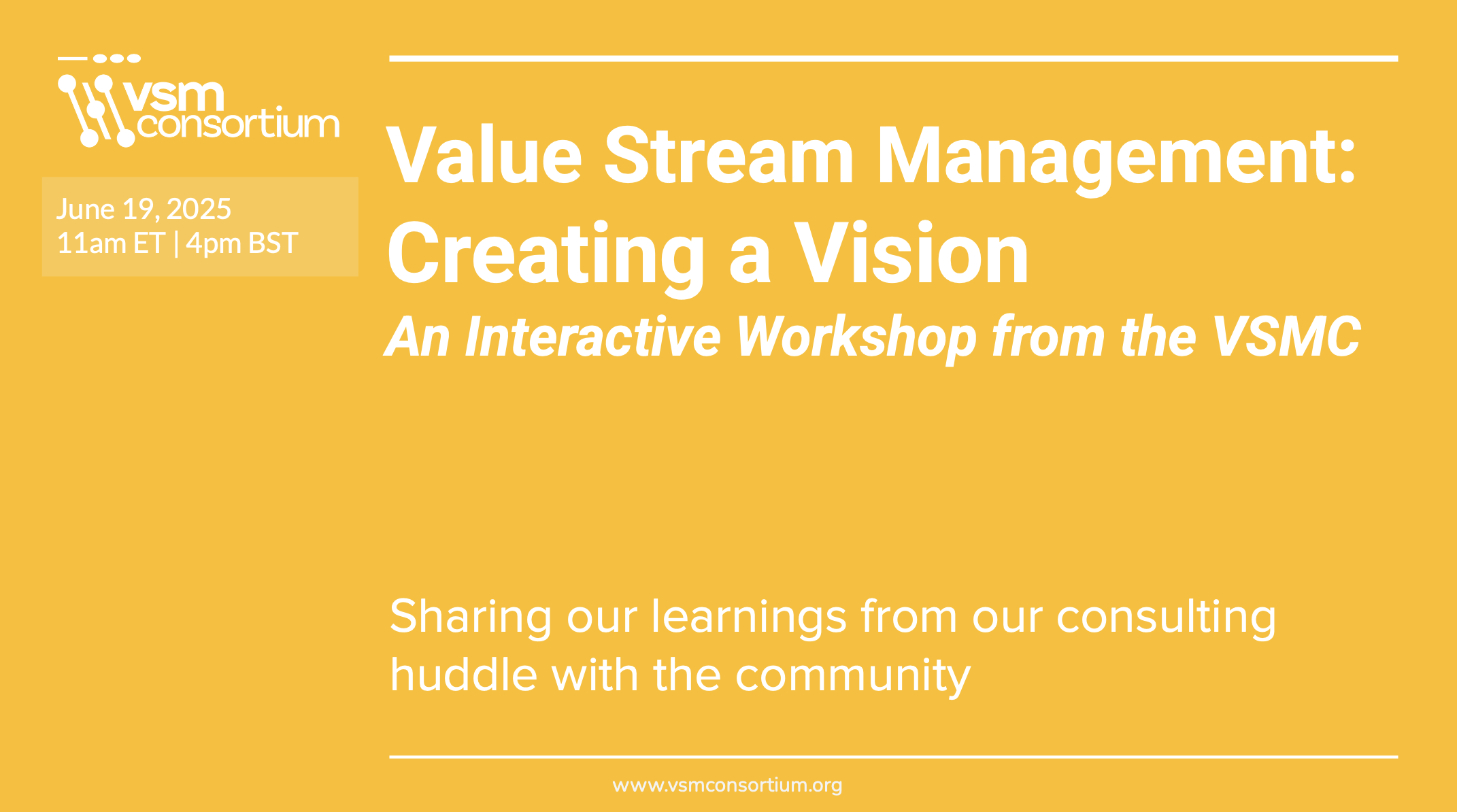Although we weren’t around for it, agile, lean transformations have been around for more than a century:
- In 1913 Henry Ford experimented with the flow of production by interchanging and moving different parts of production to achieve standardization of work.
- Since its company’s founding in 1937, the Toyota Production System has sought input from all areas of the organization to innovate continuously.
This means that Agile, Lean, and Flow experts aren’t creating something new, but building on these ideas. We are using some of the Lean disciplines such as Value Stream Management to work towards continuous improvement to help solve business problems.
Agile Development is Not Enough
The transformation and analyst communities are increasingly focused on Value Stream Management (VSM) as a way for organizations to drive value to customers. These types of projects are sometimes sold under umbrella terms such as digital, technical, or business transformations. As these initiatives have matured, often they have failed to deliver the promised value.
We all have heard about organizations trying Agile on for size. You sometimes hear:
- We’re grabbing onto a Scaling framework.
- We’re “Doing” the Agile thing.
- We’re moving from projects to products
They have grasped a bit of this movement, maybe in individual teams. But without a more comprehensive plan, you can see why these efforts often disappoint. Value Stream Management is coming of age now because its discipline can add value to those types of initiatives inside of organizations.
Overcoming Assumptions
Assumptions can be your enemy, and Value Stream Management can help you check them.
Have you ever run across a leader who is a one-trick pony? They’ve been in the game a long, long time. They are smart and well respected, but they always seem to run the same plays week after week, regardless of the situation.
Our gut and experience may help us make the right decisions sometimes, but wouldn’t be better to be able to visualize and make data-based decisions? Imagine being able to see into your processes and make prioritized decisions that future-proof your organization. Systematic, data-driven, pragmatic improvements help you and your team achieve valuable business outcomes that matter to your organization’s bottom line. For example, you might help solve your organization’s flow or release locked-in value.
Value Stream Management in Action
Let’s walk through how I might help a client build active Value Stream Management as a discipline into their organization. A common experience is an organization moving from an on-prem solution to a cloud-based solution to improve their cloud computing capabilities. Companies have high expectations of the technical and security value of cloud offerings, but after moving to the cloud, they often do not fully realize those expectations. They then get stuck revisiting processes to unlock additional value.
These issues are not limited to cloud computing, but throughout the modern software development landscape. Technology evolutions in machine learning, containers, and DevOps also often have failed to meet early expectations.
This is where Value Stream Management is a good fit. Let’s explore how:
- What if we had understood the organization's goals for upgrading to that technology or doing a DevSecOps transformation?
- What if we had been able to visually identify the bottlenecks and constraints related to the value streams?
In working with clients, I usually see that the processes and workflows for implementation are falling short, not the technology. By revisiting an organization’s processes, applying "value stream thinking,” and identifying its value streams, organizations can unlock the value they had envisioned. And VSM not only unlocks the flow in Development but on the business side, too.
That type of planning is critical when finding a solution, but that’s only a start. New Value Stream Management tools can help you craft a framework that visualizes and measures pain points, bottlenecks, and constraints throughout your business. You can point to data and not rely on your gut or a guess, to make data-based decisions to improve your organization's future.
When you combine careful planning with the latest Value Stream Management tools, your organization is building on the foundations laid by companies such as Ford and Toyota. Their innovations revolutionized manufacturing, and your innovations based on implementing better processes around real-time data will help you meet—and often exceed—the future needs of your customers.

Keith Buehlman
Keith is Senior Director Business Agility Enablement at NTT DATA Services, a VSMC Leader Member. He is passionate about bringing value streams to life in the Age of Software, with business agility.








Comments 0